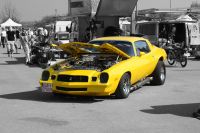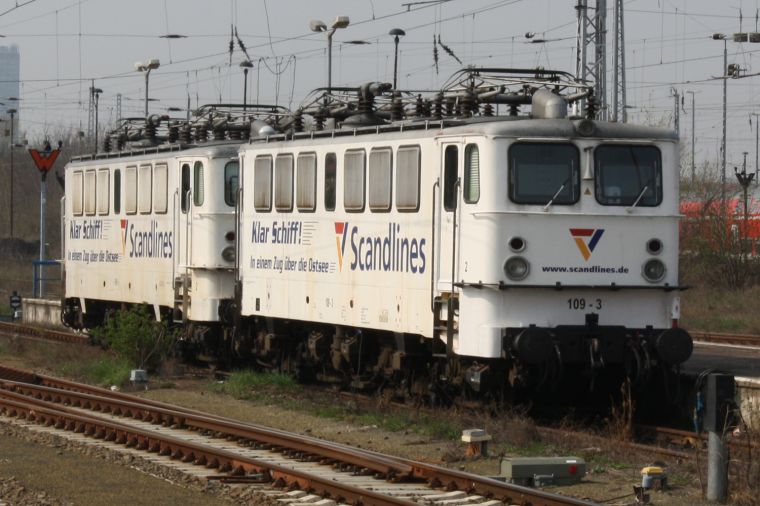Holzroller
Posted: 16 April 2009
| Taken: | 2009-04-16 22:54:54 |
|---|---|
| Camera: | Canon EOS 1000D |
| Exposure: | 0/1 |
| ISO: | 200 |
| Aperture: | f/20.0 |
| Exposure Time: | 1/125 |
| Focal Length: | 55 mm |

This work is licensed under a Creative Commons Germany license.
Notes
Boy, am I ever slow. In my defense, university started again, so I’ll probably remain slow for, well, a while, and keep posting old stuff from Berlin, such as this one!
The east german classes E 11 (class 211 since 1970, class 109 after re-unification) and E 42 (242, then 142) were the exact analogue to the west german classes E 10 (class 110 since 1968) and E 40 (class 140): One as the fast passenger locomotive, one as the freight unit, but wherever possible identical, which meant the main differences were in the gearing. In fact, the GDR originally planned to license the E 10 and E 40, but in the cold war the west german railway industry completely refused, so they had to roll their own.
The resulting locomotive is less powerful than the capitalist alternative (3000 kW/4000 HP versus 3700 kW/5000 HP), but still compared favorably to many other locomotives built at the same time all over europe. It’s also known as being rather reliable. With a walkway on top (for maintenance) and spiked wheels, it earned the name “Holzroller” (wooden kick-scooter). By the way, there is also a six-axle version (as the DB had with the E 50), but which uses different electricity, so it does not really count. The two 109s here are owned by Georg Verkehrsorganisation and haul the german part of the only direct train between Germany and Sweden (Berlin-Malmö), a night train which uses a ferry (from Scandlines, hence the livery) to cross the baltic sea.
Fun thing to note: When assigning the original class numbers, both DB and DR (like DRG/DRB before the war) followed the steam locomotive scheme (but with an added E), where among other things the 00 to 19 range mean passenger locomotives and 40-59 means steam locomotives or slow passenger units. This system is still followed for electrics to this day, just with a ‘1’ prefixed (in the GDR it was a ‘2’ instead). What is important is that when DR built these locomotives, DB already had an E 10, and an E 40 and E 41 (for commuter trains), so DR chose E 11 and E 42. In the early days of the german division, that was done without any official or even informal accord, so that when germany was re-unified, no renumbering was necessary. This idea was later abandoned and then numbering was changed anyway, but quite a lot of DR vehicles managed to retain their lower two digits, such as the E 42/242/142.

 Deutsche Version
Deutsche Version Entire Gallery
Entire Gallery

 Next Picture
Next Picture
 Previous Picture
Previous Picture
